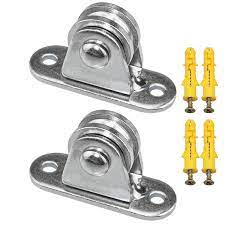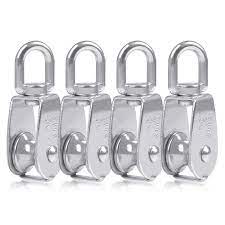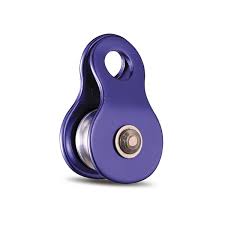Product Description
pulley spacer spring speed reducer bushing pto belt idler mini chain sheave Spinning taper cast sheaves and pulleys wheel wire driven brass metal multiple
What is taper cast pulleys?
A taper-lock pulley is a type of pulley that has a tapered bore that fits CHINAMFG a tapered shaft. This type of pulley is commonly used with V-belts, as the tapered bore helps to ensure that the belt stays in place and does not slip.
Taper-lock pulleys are typically made of cast iron or aluminum. They are available in various sizes and styles, so you can find 1 that fits your needs.
Taper-lock pulleys are a reliable and efficient way to transmit power. They are easy to install and maintain, and they are available in a variety of sizes and styles.
Here are some of the benefits of using taper-lock pulleys:
- They are a reliable and efficient way to transmit power.
- They are easy to install and maintain.
- They are available in a variety of sizes and styles.
If you want a reliable and efficient way to transmit power, taper-lock pulleys are a great option.
Application of taper cast pulleys
Taper-lock pulleys are used in a variety of applications, including:
- Automotive engines: Taper-lock pulleys are used in automotive engines to transmit power from the crankshaft to the accessories, such as the alternator, water pump, and power steering pump.
- Air conditioning: Taper-lock pulleys are used in air conditioning systems to transmit power from the engine to the compressor.
- Conveyor belts: Taper-lock pulleys are used in conveyor belts to transmit power from the motor to the belt.
- Other machines: Taper-lock pulleys are also used in other machines, such as generators and pumps.
Taper-lock pulleys are a reliable and efficient way to transmit power. They are easy to install and maintain, and they are available in a variety of sizes and styles.
Here are some of the benefits of using taper-lock pulleys:
- They are a reliable and efficient way to transmit power.
- They are easy to install and maintain.
- They are available in a variety of sizes and styles.
If you want a reliable and efficient way to transmit power, taper-lock pulleys are a great option.
Here are some additional details about the applications of taper-lock pulleys:
- Automotive engines: In automotive engines, taper-lock pulleys are used to transmit power from the crankshaft to the accessories, such as the alternator, water pump, and power steering pump. The taper-lock bore on the pulley ensures that the belt stays in place and does not slip, even under high loads.
- Air conditioning: In air conditioning systems, taper-lock pulleys are used to transmit power from the engine to the compressor. The compressor is responsible for circulating refrigerant throughout the system, which cools the air inside the vehicle.
- Conveyor belts: In conveyor belts, taper-lock pulleys are used to transmit power from the motor to the belt. The belt moves material along the conveyor, such as boxes or pallets.
- Other machines: Taper-lock pulleys are also used in other machines, such as generators and pumps. In generators, taper-lock pulleys are used to transmit power from the engine to the generator, which produces electricity. In pumps, taper-lock pulleys are used to transmit power from the motor to the pump, which moves fluids.
Taper-lock pulleys are a versatile and reliable way to transmit power. They are easy to install and maintain, and they are available in a variety of sizes and styles. If you are looking for a way to transmit power, taper-lock pulleys are a great option.
| Certification: | CE, ISO |
|---|---|
| Pulley Sizes: | Type F |
| Manufacturing Process: | Forging |
| Material: | Carbon Steel |
| Surface Treatment: | Baking Paint |
| Application: | Chemical Industry, Grain Transport, Mining Transport, Power Plant |
| Samples: |
US$ 9999/Piece
1 Piece(Min.Order) | |
|---|

What safety considerations should be kept in mind when working with mini pulleys?
Working with mini pulleys requires careful attention to safety to prevent accidents and injuries. Here’s a detailed explanation of the safety considerations:
1. Read and Follow Manufacturer Guidelines: Familiarize yourself with the manufacturer’s instructions, warnings, and recommended practices for the specific mini pulley model you are working with. Adhere to their guidelines regarding installation, operation, maintenance, and safety precautions.
2. Proper Training and Knowledge: Ensure that individuals working with mini pulleys have received adequate training and possess the necessary knowledge of safe handling procedures. Familiarize yourself with the potential hazards associated with mini pulleys and understand the appropriate safety protocols.
3. Use Personal Protective Equipment (PPE): Wear appropriate personal protective equipment, such as safety glasses, gloves, and protective clothing, when working with mini pulleys. PPE can help protect against potential hazards like flying debris, sharp edges, or accidental contact with moving parts.
4. Secure and Stable Mounting: Ensure that mini pulleys are securely and stably mounted in their designated positions. Use appropriate fasteners and mounting techniques recommended by the manufacturer. A secure mounting prevents pulleys from dislodging or falling during operation.
5. Inspect Pulleys Regularly: Regularly inspect mini pulleys for signs of wear, damage, or misalignment. Check for cracked or deformed pulley components, frayed belts or cables, and loose or damaged bearings. Replace any worn or damaged parts promptly to maintain safe operation.
6. Avoid Exceeding Load Capacities: Do not exceed the recommended load capacities specified by the manufacturer for the mini pulleys. Overloading can lead to pulley failure, loss of control, and potential accidents. Consider the weight, forces, and torque requirements of the system when selecting pulleys.
7. Ensure Proper Belt or Cable Tension: Maintain proper tension in belts or cables used with mini pulleys. Insufficient tension can cause slippage, while excessive tension can lead to premature wear or failure. Follow the manufacturer’s recommendations for belt or cable tensioning to ensure safe and efficient operation.
8. Beware of Pinch Points: Be cautious of pinch points between the pulley and other components or objects. Keep fingers, hands, and other body parts clear from the rotating pulley and related machinery during operation to prevent entanglement or injury.
9. Lockout/Tagout Procedures: When performing maintenance, repairs, or adjustments on systems with mini pulleys, follow appropriate lockout/tagout procedures to ensure that the equipment is de-energized and cannot be accidentally started or operated.
10. Provide Adequate Lighting and Visibility: Ensure proper lighting and visibility in the work area to clearly see the mini pulleys and associated components. Good visibility helps in identifying potential hazards, performing inspections, and operating the equipment safely.
Remember that these safety considerations serve as general guidelines, and it is crucial to consult specific safety regulations, industry standards, and manufacturer recommendations for your particular application. Prioritize safety at all times when working with mini pulleys to protect yourself and others from potential hazards.

What maintenance procedures are necessary to ensure the reliability of mini pulleys?
To ensure the reliability of mini pulleys, certain maintenance procedures should be followed. Here’s a detailed explanation:
- Regular Inspection: Regular visual inspection of mini pulleys is essential to identify any signs of wear, damage, or misalignment. Inspect the pulley’s surface, groove profile, and bearings for any abnormalities. This allows for early detection of potential issues and timely corrective action.
- Cleaning: Keeping mini pulleys clean is important for their optimal performance. Remove any dirt, debris, or buildup that may accumulate on the pulley’s surface or within the grooves. Use appropriate cleaning methods, such as brushes or compressed air, while ensuring that the cleaning process does not damage the pulley or its components.
- Lubrication: Lubrication plays a crucial role in maintaining the smooth operation and longevity of mini pulleys. Follow the manufacturer’s guidelines regarding the type and frequency of lubrication required. Apply lubricant to the pulley bearings or sliding surfaces as recommended to reduce friction, prevent excessive wear, and ensure proper functioning.
- Tension Adjustment: If the mini pulley is used with belts or ropes, periodic tension adjustment may be necessary. Proper tension ensures optimal power transmission, prevents slippage, and prolongs the life of the belts or ropes. Consult the manufacturer’s instructions or guidelines to determine the appropriate tensioning procedure.
- Bearing Maintenance: If the mini pulley incorporates bearings, proper bearing maintenance is crucial. Follow the manufacturer’s recommendations for bearing lubrication, cleaning, and replacement intervals. Regularly monitor the bearings for signs of wear, noise, or rough operation. Timely replacement of worn-out or damaged bearings is important to prevent pulley malfunction.
- Alignment Checks: Check the alignment of mini pulleys to ensure they are properly aligned with other components in the system. Misalignment can lead to increased wear, reduced efficiency, and premature failure of the pulley. If misalignment is detected, adjustments should be made to bring the pulley into proper alignment.
- Replacement of Worn Components: Over time, certain components of mini pulleys, such as belts, ropes, or bearings, may wear out and require replacement. Regularly assess the condition of these components and replace them when necessary to maintain the reliability of the pulley system.
- Record Keeping: Maintain records of maintenance activities performed on mini pulleys. This includes details of inspections, cleaning, lubrication, repairs, and component replacements. Keeping accurate records helps in tracking maintenance history, identifying recurring issues, and planning future maintenance tasks.
By following these maintenance procedures, mini pulleys can be kept in reliable working condition, ensuring their longevity, performance, and overall system reliability.

What types of materials are typically used in the construction of mini pulleys?
The construction of mini pulleys involves the use of various materials depending on the specific application requirements. Here are some types of materials commonly used:
- Metal Alloys: Metal alloys such as aluminum, steel, and stainless steel are widely used in mini pulley construction. These materials offer excellent strength, durability, and resistance to wear and corrosion. Aluminum is often chosen for its lightweight properties, while steel provides high load-bearing capacity and rigidity.
- Plastics: Plastics like nylon, acetal, and polyurethane are commonly employed in mini pulley manufacturing. These materials offer advantages such as low friction, chemical resistance, and noise reduction. They are also lightweight, making them suitable for applications where weight reduction is important.
- Ceramics: Ceramics, including zirconia and alumina, are used in specialized applications that require extreme hardness, high temperature resistance, or electrical insulation properties. Ceramic pulleys are often used in industries such as semiconductor manufacturing, where precision, durability, and resistance to harsh environments are crucial.
- Carbon Fiber Composites: Carbon fiber composites are employed in mini pulleys that require a combination of strength, lightness, and stiffness. These materials offer excellent tensile strength and low weight, making them suitable for applications where high performance and weight reduction are priorities, such as in aerospace or sports equipment.
- Rubber or Elastomers: Rubber or elastomeric materials like neoprene or polyurethane are utilized in pulleys that require enhanced grip or vibration dampening properties. These materials provide flexibility, shock absorption, and improved traction, making them suitable for applications involving belts or ropes.
- Hybrid Materials: In some cases, mini pulleys are constructed using a combination of different materials. For example, a metal core may be combined with a plastic or rubber coating to provide a balance of strength, durability, and specific functional properties.
It’s important to note that the material selection for mini pulleys depends on factors such as load requirements, environmental conditions, desired performance characteristics, and cost considerations. Manufacturers choose materials that best meet the specific needs of the application to ensure optimal performance and longevity.


editor by CX
2023-12-14
